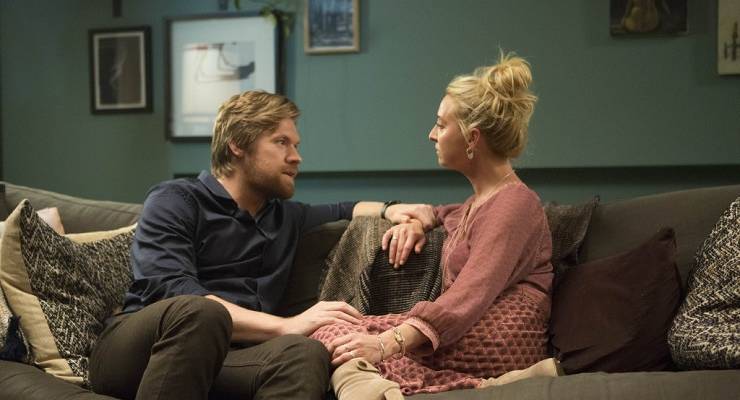
Two weeks, two big lifelines thrown to Australia’s large media corporations. And for arts and entertainment, crushed by the COVID-19 shock? A deliberately crafted… nothing (at least at the federal level).
And yet, ensuring Australia’s creative industries get to the other side is a lot cheaper — and a lot more important — than attempting to bail out old media dependent on collapsing ad-supported business models. According to former News Corp Australia boss Kim Williams, a 40% funding boost off the current low base would provide the transformation the sector needs.
To an outsider, it must seem an odd choice. Yet in all the chatter of “looking at all options with fresh eyes”, the government’s media, entertainment and arts industry pronouncements are the only real-time example we have to judge the actual Morrison-Frydenberg vision of a post-coronavirus Australia.
It suggests that we’re heading for something quintessentially Trumpian: sectoral policy based on rewarding friends and punishing enemies.
Readers of Malcolm Turnbull will be unsurprised at the federal government swiftly rushing to the rescue of News Corp, Nine and Seven West Media.
The government has lavished these companies with first-class treatment — everything from waiving spectrum fees through to leaning on Google and Facebook to share their ad revenue.
The government would have been gratified by the quick pay-back. On Monday, News Corp’s Sydney tabloid, The Daily Telegraph, announced the latter story with the headline “Tech Titan Takedown”.
By Wednesday, its front page was promising an all-caps “ROARING TWENTIES” off the back of Frydenberg’s (unidentified) tax reform.
Over the weekend, News Corp commentators were as one in urging the prime minister to cash in his COVID-19 bounce. “Political capital built during the crisis must be spent on reform,” encouraged The Australian’s editor-at-large Paul Kelly.
Looks like it was money well spent for the government — particularly when they’re expecting the digital platforms to pick up the bill. But the government packages didn’t just direct support toward old media; they directed support away from the creative industries and emerging new media.
The biggest hit was the “suspension” of Australian content rules for Australia’s free-to-air networks for 2020 and, probably, for 2021. This saves the networks much of the money they would otherwise put in the production sector to make first-run Australian drama — estimated at about $100 million a year.
As Offspring screenwriter Debra Oswald tweeted: “Oz screen storytelling will pretty much disappear or be reduced to a shrivelled novelty.”
The money give-away to old media in the federal government’s packages came through repurposing most of a fund designed to help small, regional and emerging media adapt to disruptive change.
The money has been topped up to about $50 million and shunted to old print and broadcast media companies for their core function: public interest journalism.
Sure, great for journalism. But it doesn’t get to the core of old media’s challenge: the collapse of advertising revenues they have long relied on. The coronavirus shock has accelerated that decline. No one expects a bounce back when it’s over.
By perspective, just the week before the government redirected $50 million to traditional media, the Australia Council announced that it would be sharing out just $31.7 million a year to 144 arts organisations over the next four years.
On top of that, the government rejected attempts to amend the JobKeeper package to include arts and entertainment workers, despite the fact the very nature of the industry prevents such workers from working for one employer for 12 months. It’s a gig economy.
And despite (or, perhaps, because of) Australia’s growing reliance on the the ABC for news and information, the government is doggedly persevering with its freeze on funding for the public broadcaster.
There’s not a lot of surprises in all this. It brings together two long-term themes of Australian policy: a media policy that’s about supporting the large corporations; and an approach to industry policy that’s more about propping up losers than picking winners.
But the modern twist this government has brought is to punish the creative arts and entertainment industries along the way. With a few exceptions (maybe Gorton, maybe Turnbull), Australia’s conservatives have long been disdainful of the arts and creative industries. Now, with the opportunity provided by COVID-19, that disdain is turning to wrecking.









The government plan seems very odd. Surely the simple and logical thing to do would be to raise a point of consumption tax on all electronic media advertising and have amazon, facebook etc. collect it as employees do with income tax. Probably the states could do it if the federal government does not.
I should have said employers.
Same old, same old.
Quel bloody surprise – so what else is new?
Sadly, Aussies are too busy watching fantastic Australian series on iview, SBS, Netflix, Stan to notice….Love My Way has even reappeared, Stateless- brilliant, Total Control, Offspring-
unique Australian storytelling – some light and fun, some satirical, some scathing of our politicians- brushed aside in one quick sweep-
How much money has the coalition given Murdoch since 2014? Trying to find exact stats. It has all been done so covertly.